 W
WThe 2K22 Tunguska is a Russian tracked self-propelled anti-aircraft weapon armed with a surface-to-air gun and missile system. It is designed to provide day and night protection for infantry and tank regiments against low-flying aircraft, helicopters, and cruise missiles in all weather conditions. Its NATO reporting name is SA-19 "Grison".
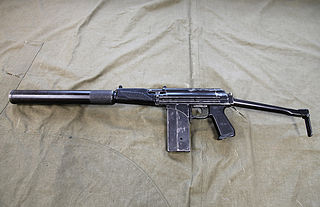 W
WThe 9A-91 is a compact assault rifle currently in use with Russian police forces. It is used as a cheaper and more versatile alternative to the SR-3 "Vikhr".
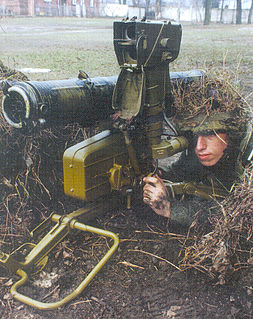 W
WThe 9K111 Fagot is a second-generation tube-launched SACLOS wire-guided anti-tank missile system of the Soviet Union for use from ground or vehicle mounts. The 9K111 Fagot missile system was developed by the Tula KBP Design Bureau for Instrument Building. "9M111" is the GRAU designation of the missile. Its NATO reporting name is AT-4 Spigot.
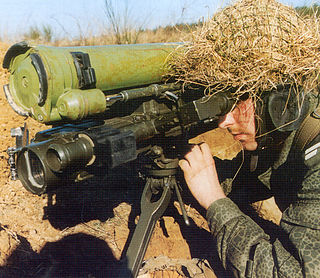 W
WThe 9K115 Metis is a man-portable, tube launched, SACLOS wire-guided anti-tank guided missile of the Soviet Union. It is considered the Soviet counterpart to the American M47 Dragon ATGM.
 W
WThe 9K115-2 Metis-M is a Russian anti-tank missile system. "9K115-2" is the GRAU designation of the missile system. Its NATO reporting name is AT-13 Saxhorn-2. The system is designed to augment the combat power of company-level motorized units.
 W
WThe 9K121 Vikhr is a Russian laser guided anti-tank missile. "9K121" is the GRAU designation for the missile system. The missile can be launched from warships, Ka-50 and Ka-52 helicopters, and Su-25T aircraft. It was first shown publicly at the 1992 Farnborough Airshow.
 W
WThe 9M113 Konkurs is a Soviet SACLOS wire-guided anti-tank missile.
 W
WThe 9M133 Kornet is a modern Russian man-portable anti-tank guided missile (ATGM) intended for use against main battle tanks. It was first introduced into service with the Russian army in 1998.
 W
WThe 9M133M Kornet-M Russian anti-tank guided missile (ATGM) is an improved version of the 9M133 Kornet ATGM, with increased range, fire-and-forget capability, and an improved warhead.
 W
WThe A-91 is a bullpup assault rifle developed during the 1990s by KBP Instrument Design Bureau in Tula, Soviet Union as an offspring of the 9A-91 firearm family. The A-91 retains the simple gas-operated, rotating bolt action and a trigger unit design from the 9A-91, it features a bullpup polymer housing, with an integral 40 mm single-shot grenade launcher mounted under the barrel. The earliest prototypes of the A-91 bullpup were added with the grenade launcher above the barrel, and with a frontal vertical foregrip; current models are fitted with the underbarrel launcher, which serves as a forearm. The A-91 has a forward ejection system, initially developed in Tula by designers like Afanasiev during the early 1960s. In this system, the ejection port is located right above the pistol grip, and is directed forward. Extracted cases go from bolt head through the short ejection tube to the ejection port, and fall out of the gun well clear of the shooter's face, even when firing from the left shoulder. As for now, the A-91 is made in small numbers and, probably, is used by some elite police units in Russia; it is also offered for export and domestic military and police sales.
 W
WThe ADS is a Russian assault rifle specially made for combat divers. It is of a bullpup layout and is chambered in the 5.45×39mm M74 round. The ADS can adapt a suppressor and optical sights.
 W
WThe AGS-17 Plamya is a Soviet-designed automatic grenade launcher in service worldwide.
 W
WThe AGS-30 Atlant is a Russian-designed automatic grenade launcher currently in production in the Russian Federation and in service with the Russian armed forces.
 W
WThe AK-630 is a Soviet and Russian fully automatic naval close-in weapon system based on a six-barreled 30 mm rotary cannon. In "630", "6" means 6 barrels and "30" means 30 mm. It is mounted in an enclosed automatic turret and directed by MR-123 radar and television detection and tracking. The system's primary purpose is defense against anti-ship missiles and other precision guided weapons. However it can also be employed against fixed or rotary wing aircraft, ships and other small craft, coastal targets, and floating mines. Once operational, this weapon system was rapidly adopted, with up to 8 units installed in every new Soviet warship, and hundreds produced in total.
 W
WThe Berezin B-20 was a 20 mm caliber autocannon used by Soviet aircraft in World War II.
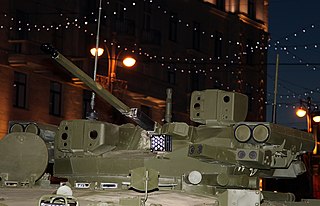 W
WThe Bumerang-BM or DUBM-30 Epoch is a remotely controlled turret for the T-15 Armata heavy IFV, Kurganets-25 and Bumerang platforms. It was first seen in public in 2015 during rehearsals for the Moscow Victory Day Parade, mounted on those three platforms.
 W
WThe OTs-03 SVU is a bullpup designated marksman rifle. The SVU was developed to meet the needs of the security forces of the Russian Ministry of Internal Affairs, such as OMON. The SVU was first seen in use in the First Chechen War. Originally, the plan was to just slightly modernize the aging SVD, but the designers eventually realised that the configuration of the weapon would have to be completely altered, leading to the creation of the SVU.
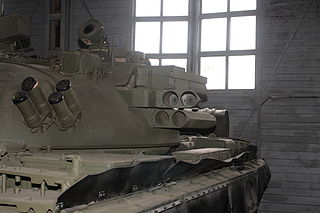 W
WDrozd is an active protection system developed in the Soviet Union, designed for increasing tanks' protection against anti-tank missiles and RPGs. It is considered the world's first operational active protection system, created in 1977–78 by A. Shipunov's KBP design bureau as Kompleks 1030M-01. Its chief designer, Vasily Bakalov, was awarded the Lenin Prize for his work on its development.
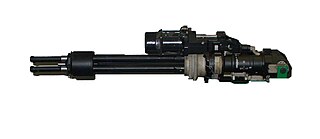 W
WThe Glagolev-Shipunov-Gryazev GShG-7.62 is four-barreled rotary machine gun designed in the Soviet Union, similar to firearms such as the M134 Minigun. It is a gas operated, self-powered weapon, which is in contrast with most other rotary guns. It was developed in 1968–1970 for the Mi-24 helicopter together with YakB 12.7mm machine gun, and is currently used in GUV-8700 gun pods, and flexible mounts on Kamov Ka-29.
 W
WThe GM-94 is a pump action grenade launcher developed by the KBP design bureau for use by Russian special and security forces.
 W
WThe Gryazev-Shipunov GSh-6-23 is a six-barreled 23 mm rotary cannon used by some modern Soviet/Russian military aircraft.
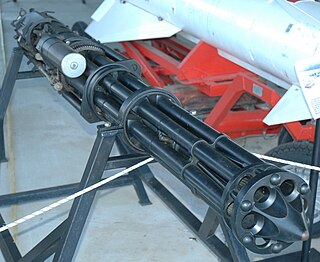 W
WThe Gryazev-Shipunov GSh-6-30 is a Russian 30 mm rotary cannon aircraft-mounted and naval autocannon used by Soviet and later CIS military aircraft. The GSh-6-30 fires a 30×165mm, 390 g projectile.
 W
WThe Gryazev-Shipunov GSh-23 ) is a twin-barreled 23 mm autocannon developed in the Soviet Union, primarily for military aircraft use. It entered service in 1965, replacing the earlier Nudelman-Rikhter NR-23 cannon.
 W
WThe Gryazev-Shipunov GSh-30-2 (ГШ-30-2) or GSh-2-30 is a Soviet dual-barrel autocannon developed for use on certain ground attack military aircraft and helicopters.
 W
WThe GSh-18 is a 9 mm semi-automatic pistol developed by the KBP Instrument Design Bureau in Tula during the 1990s. The pistol's name is derived from its designers—Gryazev and Shipunov—and its magazine capacity of 18 rounds.
 W
WHermes is a family of modularly-designed guided missiles developed in Russia by the KBP Instrument Design Bureau. Capable of being fired from aerial (Hermes-A), land based (Hermes) and naval (Hermes-K) platforms, the Hermes system features a multistage rocket missile with a high-powered booster, and fire-and-forget capability with laser guidance and infrared homing. It is designed to engage single and multiple targets with single or volley fire at ranges of up to 100 km and can track and destroy over-the-horizon targets.
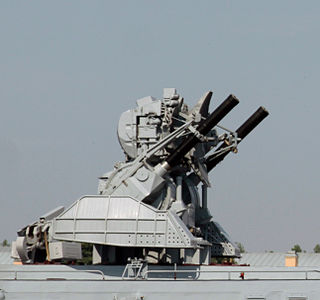 W
WThe Kortik close-in weapon system (CIWS) is a modern naval air defence gun-missile system deployed by the Russian Navy. Its export version is known as Kashtan, with the NATO designation CADS-N-1 Kashtan.
 W
WThe 2K25 Krasnopol is a Soviet 152/155 mm cannon-launched, fin-stabilized, base bleed-assisted, semi-automatic laser-guided, artillery weapon system. It automatically 'homes' on a point illuminated by a laser designator, typically operated by a ground-based artillery observer. Krasnopol projectiles are fired mainly from Soviet self-propelled howitzers such as the 2S3 Akatsiya and 2S19 Msta-S and intended to engage small ground targets such as tanks, other direct fire weapons, strong-points, or other significant point targets visible to the observer. It can be used against both stationary and moving targets.
 W
WOSV-96 is a Russian heavy semi-automatic precision rifle chambered for the 12.7×108mm.
The OTs-21 Malysh is a 9 mm semi-automatic pistol designed by the KBP Instrument Design Bureau for special applications where concealment is a key priority.
 W
WThe P-96 is a Russian 9 mm semi-automatic pistol designed by the KBP Instrument Design Bureau for the Russian Armed Forces. The pistol was not accepted and then offered in a modernized form for law enforcement and security firms.
 W
WThe Pantsir missile system is a family of self-propelled, medium-range surface-to-air missile and anti-aircraft artillery systems. Starting with the Pantsir-S1 as the first version, it is produced by KBP Instrument Design Bureau of Tula, Russia. The system is a further development of 2K22 Tunguska and uses phased array radars for both target acquisition and tracking.
 W
WPantsir-M is a Russian jamming-resistant naval close-in weapon system (CIWS) which entered service in 2018. Pantsir-M is equipped with friend or foe identification system and armed with naval version of the Pantsir's 57E6 missiles and Hermes-K missiles. Its secondary armament are two six-barreled 30×165mm GSh-6-30K/AO-18KD rotary cannons. Same as on Kashtan-M. Pantsir-M is fully automated and can engage up to four targets simultaneously at a range of up to 20 km and can operate as a battery of up to four modules. Pantsir-M can intercept sea skimming missiles flying as low as two meters above the surface. If a target isn't sufficiently destroyed by Pantsir's missile attack it can automatically direct its cannons against it. Pantsir-M's phased array radar, electro-optical/infrared targeting and identification system are based on that of Pantsir's 1RS2-1.
 W
WThe PP-90 is a Russian 9 mm folding submachine gun, developed by the KBP Instrument Design Bureau in Tula for use with special units of the Russian Ministry of Internal Affairs (MVD). It is designed for close quarters combat, particularly engagements that require the weapon to be deployed rapidly in unusual circumstances.
 W
WThe PP-90M1 is a 9×19mm Parabellum Russian submachine gun developed by KBP Instrument Design Bureau in the 1990s. It features a 64-round helical magazine, and other than sharing a manufacturer is unrelated to the similarly named PP-90M.
 W
WThe PP-93 submachine gun was developed in the 1990s at the KBP Instrument Design Bureau in Tula as a non-folding version of earlier PP-90 clandestine submachine gun, for use by security and law enforcement units. It is operated on blowback principle and has good controllability of full automatic fire.
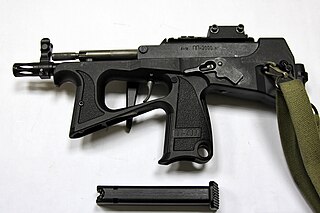 W
WThe PP-2000 is a submachine gun/machine pistol made by the KBP Instrument Design Bureau. It was first publicly displayed at the Interpolytech-2004 exhibition in Moscow even though its patent was filed in 2001 and issued in 2003.
 W
WThe PSM was designed by the Tula Design Bureau in 1969 as a self-defense firearm for law enforcement and military officers of the USSR. The pistol entered production at the Izhevsk Mechanical Plant in 1973.
 W
WThe RG-6 is a Russian 40 mm, six-shot, revolver-type grenade launcher developed between 1993 and 1994 by Central Design and Research Bureau of Sporting and Hunting Weapons, Tula, Russia.
 W
WThe RPO-A Shmel is a man-portable disposable rocket-assisted flamethrower, although it is classified as a rocket laucher by some in the West.
 W
WThe Shipunov 2A42 is a Soviet/Russian 30 mm autocannon. It is built by the Tulamashzavod Joint Stock Company.
 W
WThe U-94 UDAR is a police weapon designed and developed by the KBP Instrument Design Bureau in the early 1990s and first manufactured in 1994. It is a compact double-action revolver that chambers proprietary ammunition in the form of an unusual 12.3mm shell. It has a shrouded hammer that can be manually cocked or decocked by use of a cut-out slot at the top of the shroud. It has a side-breaking cylinder that opens to the left and uses a star-ejector to eject all the spent shells at once.
 W
WThe VSK-94 is a 9x39mm suppressed designated marksman rifle designed In 1995 in the KBP Tula Instrument-making Design Bureau designed by Vasily Gryazev.
 W
WThe Yakushev-Borzov YakB-12.7 mm is a remotely controlled 12.7×108mm caliber four-barrel rotary cannon developed by the Soviet Union in 1973 for the Mil Mi-24 attack gunship and low-capacity troop transporter, with 1470 rounds, which can also be mounted in GUV-8700 machine-gun pods with 750 rounds. It has a high rate of fire and is also one of the few self-powered guns of the Gatling type.